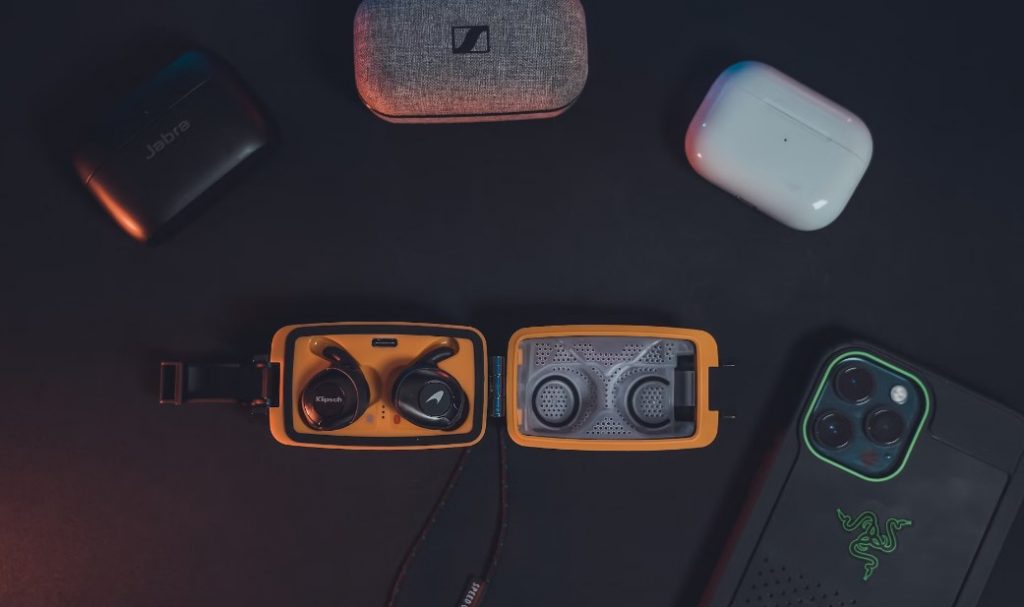In today’s digital age, gadgets have become an integral part of our daily lives. From smartphones and tablets to laptops and smartwatches, these devices keep us connected, informed, and entertained. However, with the increasing reliance on technology comes a range of health implications that can arise from extended gadget use. In this blog post, we’ll explore the various ways in which prolonged screen time can affect your physical and mental well-being.
1. Eye Strain and Digital Eye Fatigue
Extended gadget use has become an integral part of modern life, but it also brings with it a host of health concerns. One potential consequence is digital eye fatigue, which can cause dry eyes, blurred vision, eye irritation, and even headaches. The blue light emitted by screens only exacerbates these problems, making it challenging to work or carry out daily tasks.
If you are experiencing symptoms like these, you may need to consider seeking medical attention, such as EVO ICL for astigmatism, to help you see clearly and avoid further damage to your eyes. Don’t let digital eye fatigue take a toll on your productivity and quality of life.
2. Poor Posture and Musculoskeletal Issues
Another common issue associated with excessive gadget use is poor posture. Whether it’s hunching over a smartphone or slouching in front of a computer, prolonged screen time can lead to neck, shoulder, and back pain. Over time, this can contribute to musculoskeletal problems and even spinal misalignment. Practicing good ergonomics and taking regular breaks from screens can help alleviate these issues.
3. Sleep Disruption and Circadian Rhythm Disturbance
The blue light emitted by screens can interfere with the body’s natural sleep-wake cycle, also known as the circadian rhythm. Exposure to blue light in the evening can suppress the production of melatonin, the hormone responsible for regulating sleep. As a result, prolonged gadget use before bedtime can lead to difficulty falling asleep, disrupted sleep patterns, and overall poor sleep quality.
4. Sedentary Lifestyle and Physical Health Risks
Extended gadget use often involves long periods of sitting, which can contribute to a sedentary lifestyle. Research has linked sedentary behavior to an increased risk of obesity, cardiovascular disease, type 2 diabetes, and other chronic health conditions. It’s essential to balance screen time with physical activity to mitigate these risks and maintain overall health and well-being.
5. Risk of Repetitive Strain Injuries (RSIs)
Continuous typing, tapping, and swiping on gadgets can put strain on the muscles and tendons of the hands, wrists, and arms, increasing the risk of repetitive strain injuries (RSIs). Conditions such as carpal tunnel syndrome, tendonitis, and bursitis can develop over time, causing pain, numbness, and weakness in the affected areas.
6. Mental Health Impact and Digital Addiction
Excessive gadget use, particularly on social media platforms, has been associated with various mental health issues, including anxiety, depression, loneliness, and low self-esteem. The constant barrage of notifications, likes, and comments can lead to feelings of inadequacy and FOMO (fear of missing out). Moreover, digital addiction, characterized by compulsive and excessive use of gadgets, can disrupt daily life, relationships, and work responsibilities.
7. Reduced Physical Activity and Obesity Risk
Spending more time on gadgets often means less time being physically active. Whether it’s scrolling through social media feeds or binge-watching Netflix, sedentary screen time displaces opportunities for exercise and movement. This lack of physical activity can contribute to weight gain, obesity, and related health problems, such as high blood pressure and metabolic syndrome.
8. Impact on Brain Development, Especially in Children
For children and adolescents, whose brains are still developing, excessive screen time can have long-term consequences. Research suggests that prolonged gadget use may impair cognitive skills, attention span, and academic performance. It can also interfere with social and emotional development, as face-to-face interactions are replaced by virtual communication.
9. Radiation Exposure Concerns
While most electronic devices are considered safe for everyday use, some people may have concerns about potential radiation exposure from gadgets such as smartphones and tablets. Although the levels of radiation emitted by these devices are typically low and within regulatory limits, long-term exposure remains a topic of debate among researchers and health experts.
10. Strategies for Mitigating the Health Impacts of Gadget Use
Despite the potential health risks associated with extended gadget use, there are several strategies you can employ to mitigate these effects:
- Practice the 20-20-20 rule: Every 20 minutes, take a 20-second break and look at something 20 feet away to reduce eye strain.
- Use blue light filters or glasses to minimize exposure to harmful blue light, especially before bedtime.
- Maintain good posture and ergonomics when using gadgets to prevent musculoskeletal problems.
- Limit screen time, especially before bedtime, to improve sleep quality and maintain a healthy circadian rhythm.
- Incorporate regular physical activity into your daily routine to counteract the effects of a sedentary lifestyle.
- Encourage children to engage in a variety of activities beyond screens, such as outdoor play, reading, and creative hobbies.
- Set boundaries and establish screen-free zones or times to promote healthier gadget use habits for the whole family.
In Conclusion
While gadgets have undoubtedly transformed the way we live, work, and communicate, it’s essential to be mindful of their potential impact on our health. By recognizing the risks and implementing strategies to mitigate them, we can enjoy the benefits of technology while safeguarding our well-being for the long term.
